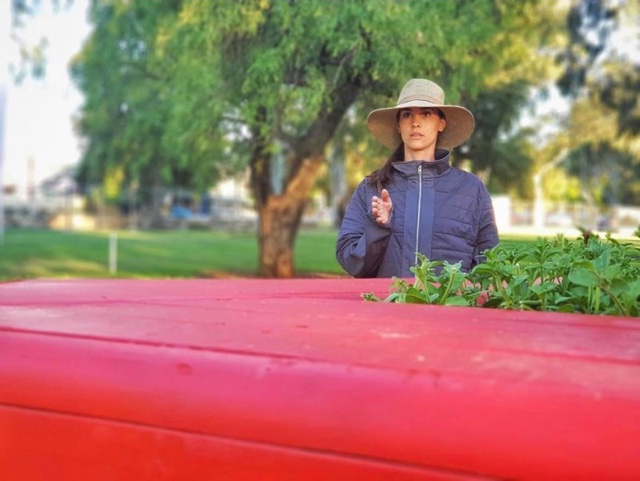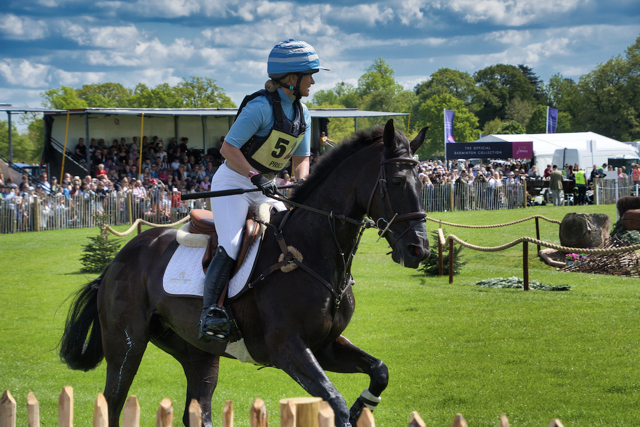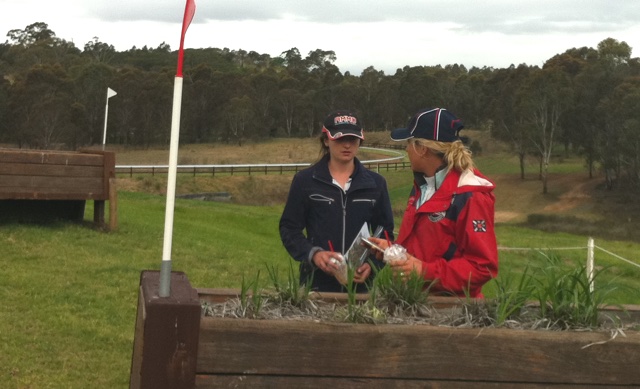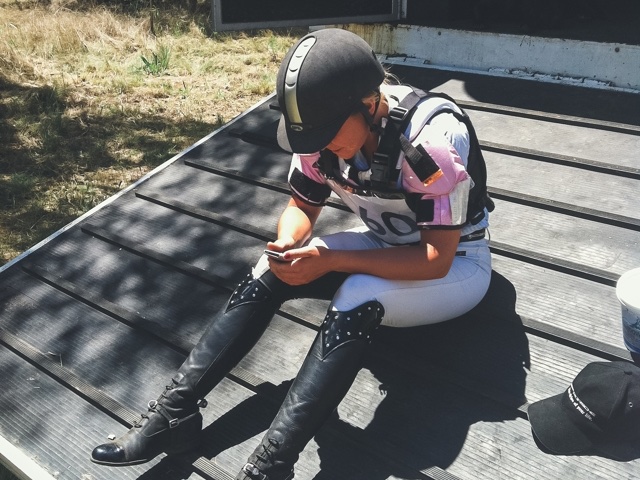Walking the course
With leading Australian coach and 5* winner Craig Barrett. Article by Alison Duthie

Cross Country walking tips
In the third of our articles with international event rider Craig Barrett, Level 2 eventing and dressage coach, we asked him to pass on some tips for walking the cross country course.
The aim of walking the cross country course is to make a plan for how you are going to ride each and every jump – that is the main objective. Let’s look at the four points I believe are most important when walking the course.
First objective: The Line
The first thing I like to focus on is the line to each jump. That might be obvious if the fence is in the middle of the paddock and there is nothing stopping you from taking a straight line to the fence but what happens if there are a few trees in the way? There could be a combination fence just over the brow of a hill that you can’t see until you are almost at the top of the hill and if that is the case, you are going to have to work out how to get to that fence on the best line possible.
Your horse can do nothing about the approach you make to the fence, it is totally the rider’s responsibility to get it right. If you don’t get the line right your horse is going to struggle, especially if the fence is a combination, a narrow fence or both! The correct line will give your horse the best possible chance of jumping the fence easily.

Second objective: The speed
The course designer will intend you to jump each fence at a certain speed, but it’s fair to say that most of the ‘normal’ fences, like oxers, apexes and arrowheads can be approached at around 400 metres per minute – which is a good strong canter. Drops, upright gates and maybe jumps into water, depending on the type of jump, may be jumped a little bit slower while ditches might be a bit faster. So, part of your plan will be to work out how and when you are going to get to each individual fence at the speed required.
Along with the speed you are jumping, it’s important to think about what type of distance you want to reach each fence on. For example do you want to get in a bit close to a particular fence? If you find a good distance to the jump you are going to make the job of jumping that fence much easier for the horse.

Third objective: The Rhythm
It is important to get into a rhythm when you are out on the cross country course. If you can keep an even rhythm to the fence the horse can concentrate more on the fence itself and it allows the horse to do his job a little bit easier. As part of your plan think about areas of the course where keeping a rhythm may be a bit harder, there could be a section of the course winding through trees and you might need to work out how that will affect your rhythm.
Fourth objective: Rider Position
As you walk the course think about the position you want to be as you approach each particular fence. Are you going to be looking for the next fence, is it a drop fence and are you going to have to sit up a bit more? If it is a ditch and brush are you going to be in a more defensive position? Being in the right position is going to make you much more effective if you have to suddenly ask your horse move on a bit or slow down a bit and again make it easier for your horse to do his job.
There you have it - my four objectives for walking the cross country course - it’s all about the plan. However, there are other factors that can influence on your plan …
Who should you walk the course with?
It’s worth thinking about who you walk the course with. For the lower level rider it’s good to walk the course with a more experienced rider who can point out things that will become instinctive over time. The experienced rider will automatically land after a fence and be straight back into galloping mode and two point position but for others that has to be a learnt skill. The more experienced rider could suggest that by the time you are going past a particular tree you should be back in your two point seat.

At the lower level it’s a good idea to walk the course at least twice and I would suggest that your last walk should be on the morning of cross country so you can take note of any distractions ‘on the day’.
Distractions
On cross country you need to be ready for the unexpected and taking a final quick walk around the course the morning of cross country, when all the jump judges and officials are in place, can help to lessen the unexpected. This is especially important at the bigger events and it can give you a really good idea of what it might be like when you actually ride. The jump judges might be sitting close to where you were thinking of riding and there could be people walking the course when you are riding. If you have taken note of these sort of things on your final course walk you will be less distracted on your round. If you get distracted your horse will also be distracted and be paying less attention to the jump in front of him.

The ground
Generally, in Australia we don’t have to think about the ground too much because it’s usually more hard than soft. But when it does get wet, we tend to ride a little bit negatively, because we are simply not used to it. When it comes to muddy ground as long as your horse can get traction on the ground he will still feel confident but if he is asked to turn or slow down suddenly he could start to slip meaning he will lose his confidence. Therefore, it’s important to know where those muddy patches of ground are and do any adjusting before you get to them.
Walking with the Crosscountry App
Course walking with the CrossCountry app has made things so much easier than they used to be. Just the act of taking a photo of each fence means you are not stuck in the portaloo desperately trying to remember what fence 13 looked like! You simply go to the app look at the photo of the fence and that will trigger you into remembering what you have to do coming into the fence, at the fence and as you leave the fence. It gives you a real visual at each fence and that is invaluable. There is also the option that if you don’t trust your recall, you can always write a few notes to go with each photo to jog your memory.
Plan your Warm up
I don’t think we should finish without mentioning the plan for cross country also comes back to the plan for your warm up. We have all made the mistake of warming up on a horse that we know is used to a certain level and we’ve popped a couple of fences, headed out of the start box only to come unstuck at a combination fence at fence four when we realised he wasn’t really listening. Suddenly your plan becomes unravelled and this could have been avoided with a bit more thought going into the warm up.
Have a plan for the warm up and ask yourself these questions before you head out of the start box. Can I easily turn my horse right and left, does he move on and slow down when I ask him? It’s not enough to pop a couple of jumps. Sometimes it can also be a good idea to ask your horse to move on a little bit after fence one, then come back again before fence two. It’s a way of making sure your horse is on the aids and will be listening to you all the way round the course.

In Summary
What you are trying to do on cross country is execute the plan you have made when walking the course, and that is not as easy as it sounds. In fact, it’s really difficult. It doesn’t just happen - you have to make it happen. When you come back from cross country ask yourself ‘Did I execute the plan, did I get the right line to fence five, did I put in the right amount of strides in that combination fence?’ Asking those questions and working on your cross country plan at the next event should soon see you building up your skills and becoming more proficient at every event.
Download CrossCountry App
Craig Barrett is an Australian International 5* winner with over 25 years experience in competing and coaching at the highest level in eventing. Together with his wife Prue they run a boutique breeding facility at their property Sandhills in Branxton, NSW Australia. Read more about Sandhills at www.sandhills.com.au or follow teamsandhills on Facebook and Instagram.
Images supplied by Hayley Frielick, Jess Rae, David Webster and Ozshotz